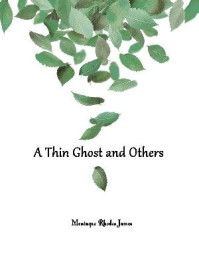




I have already written so fully of the leading and profitable varieties of raspberries, blackberries, currants, and gooseberries, that little more remains to be said; since, for reasons previously given, I do not care to go into long descriptions of obsolete varieties, nor of those so new and untested as to be unknown quantities in value. I am putting everything thought worthy of test in trial-beds, and hope eventually to write accurately concerning them.
Rubus Idceus and Rubus Strigosus
Arnold's Orange .—Canes strong, branching, yellowish brown, almost smooth, and producing but few suckers. Fruit large, somewhat shorter than Brinkle's Orange, and of a darker orange color; rich in flavor, Originated with Mr. Charles Arnold, Paris, Ontario, C. W.
Antwerp (English).—See page 202.
Antwerp (Hudson Biver).—See pages 202-205.
Antwerp (Yellow—White Antwerp).—A tender variety that needs winter protection, good culture, and vigorous pruning; otherwise, the berries are imperfect and crumble badly in picking. The fruit is exceedingly delicate and soft, and must be picked as soon as ripe or it cannot be handled. It is much surpassed by Brinkle's Orange. The canes are vigorous and the variety is easily grown. Brinkle's Orange .—For description, see page 218.
Belle de Fontenay .—See page 207.
Brandywine. —See page 208.
Belle de Palnau. —A French variety, that thrives in some localities. Canes are strong, vigorous, upright, covered with short, purplish spines, which are more numerous near the ground; berry large, obtuse conical, bright crimson; firm for so juicy and fine-flavored a berry; grains large. The berries were often imperfect on my place.
Catawissa. —See page 216. This variety is well spoken of by some good authorities. The fact that it bears in autumn should give it some consideration.
Clarke. —See page 220.
Caroline. —See page 221.
Cuthbert. —See pages 221-225.
Franconia. —See page 206.
Fastollf. —"An English variety of high reputation. It derived its name from having originated near the ruins of an old castle, so called, in Great Yarmouth. Canes strong, rather erect, branching; light yellowish brown, with few strong bristles; fruit very large, obtuse or roundish conical, bright, purplish red, rich and highly flavored, slightly adhering to the germ in picking." (Downing.)
French. —(Vice-President French).—Originated with Dr. Brinkle. "Canes strong, upright, spines short and stout; fruit medium to large, roundish, rich, bright crimson, large grains, sweet and very good." (Barry.) It is foreign in its parentage, and uncertain in many localities.
Herstine. —See pages 219, 220.
Hornet. —"Raised by Souchet, near Paris. Very productive. Canes very strong, vigorous, upright spines, purplish, rather stout, and numerous at the base; fruit very large, conical, often irregular, grains large, quite hairy, compact, crimson; flesh rather firm, juicy, sweet and good, separates freely." (Downing.) This variety appears to vary greatly with locality.
Kirtland. —(Cincinnati Red.)—One of the native varieties once grown largely, but now superseded. Fruit medium in size, obtuse conical, soft, and not very high-flavored.
Knevett's Giant. —Berry large, round, light crimson, adheres too firmly to the core, and often crumbles in picking, but is juicy and good. The canes are very strong and productive; spines purplish, short, scattering. An English variety.
Merveille de Quatre Saisons. —A French variety. This and the Belle de Fontenay are almost as hardy as any of our native kinds, and thus they form exceptions to the foreign sorts, which are usually tender. Good results might be secured by crossing them with our best native kinds. The canes of this variety must be cut to the ground in spring if much autumn fruit is desired. It is not equal to the Belle de Fontenay, to which class it belongs.
Naomi. —Identical with Franconia.
Northumberland Fillbasket. —An old-fashioned English variety, sometimes found in the garden of an amateur.
Pride of the Hudson. —See pages 190, 219.
Pearl, Bristol, Thwack. —Native varieties that resemble the Brandywine, but are not equal to it in most localities. They are passing out of cultivation.
Reliance. —A seedling of the Philadelphia, but judging from one year's test, much superior to it, and worthy of cultivation in those regions where the finer varieties cannot thrive. It is hardy, and will do well on light soils.
Saunders. —See page 220.
Rubus Occidentalis
For descriptions of
Davison's Thornless, Doolittle, or American
Improved, Mammoth Cluster,
and
Gregg,
see Chapter XXII.
American Black. —Common black-cap raspberry, found wild throughout the United States. Too well known to need description.
American White-Cap (Yellow-Cap, Golden-Cap).—"Also scattered widely throughout the country, but not common. Those who discover it often imagine that they have found something new and rare. Berries slightly oval, grains larger than those of the black-cap, yellow, with a white bloom. The canes are light yellow, strong, stocky, with but few spines. Propagated from the tips. It might become the parent of very fine varieties." (Fuller.)
Miami Black-Cap. —A vigorous, productive variety, found growing near the Miami River, in Ohio. The fruit approaches a brownish red in color, and is not equal to the Mammoth Cluster in value.
Philadelphia. —See page 220.
Seneca Black-Cap. —Raised by Mr. Dell, of Seneca County, N.Y. The fruit is between the Doolittle and Mammoth Cluster in size, and is later than the former; not so black, having a shade of purple, and is juicy, sweet, and good.
Lum's Everbearing, and Ohio Everbearing Black Raspberries. — Varieties that resemble each other. If a good autumn crop is desired, cut away the canes in the spring, so as to secure a strong early growth of new wood, on which the fruit is to be borne.
Golden Thornless. —A large variety of the American White-Cap, introduced by Purdy & Johnson, Palmyra, N.Y.
Florence. —A variety resembling the above.
Ganargua and New Rochelle. —See pages 220, 221.
In Chapter xxiv. I have described those varieties that have proved worthy of general cultivation. The Dorchester winter-killed so badly on my place, and the fruit was so inferior to that of the Kittatinny in size, that I discarded it. It is good in flavor. The Missouri Mammoth is tender and often not productive. There are new varieties that promise well, as Taylor's Prolific, Ancient Briton, Knox, Warren, Wachusett Thornless, Cro' Nest and several others. I am testing them, and do not care to express any opinion as yet, or write descriptions that would probably need considerable revision within six months.
In chapters xxvi. and xxvii. may be found a description of those distinct varieties that are of chief value in this country. I find no good reason why I should fill pages with descriptions of varieties that are rarely cultivated, and which might well give place to better kinds. Eventually, I shall give the results gathered from my trial- beds, in which I am placing all the new and old varieties said to be worthy of cultivation.


